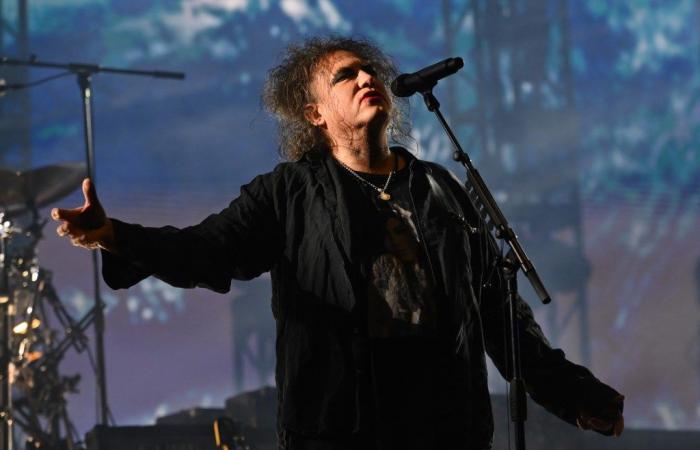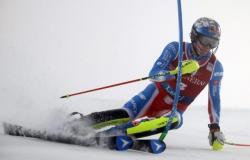The Cure’s first album in 16 years is finally here, which means Cure fans had to wait longer for Songs of a Lost World than devotees of Tool or D’Angelo have ever had to wait for an album from their favorite artist.
Frontman Robert Smith, the only consistent member of the band since its formation in 1978, has been talking up the follow-up to 2008’s 4:13 Dream for over a decade, and new songs have peppered the band’s set lists for the last two years. Still, it didn’t quite feel certain the album would ever arrive until the band released the single “Alone” in September and announced a release date.
For most of the Cure’s history, the band has built a devoted following with dark, cohesive albums like 1982’s Pornography and 1989’s Disintegration that reflect the band’s goth and post-punk roots. But what pushed the Cure into arenas and stadiums were bright, catchy crossover hits like “Just Like Heaven” and “Friday I’m in Love.” There is no push and pull between those extremes on Songs of a Lost World: it’s pretty much all doom and gloom, inspired largely by a number of deaths in Smith’s family. For most other bands, that might be worrying news, but for Cure fans, it means a potential masterpiece.
Smith recorded the album, which previously had the working title Live from the Moonwith longtime co-producer Paul Corkett and a quintet lineup featuring musicians that joined the Cure in the ‘70s, ‘80s, ‘90s, and 2010s. Smith draws inspiration from William Shakespeare and the 19th century British poet Ernest Dowson for the lyrics on Songs of a Lost Worldand the cover photo features a sculpture by the late Slovenian artist Janez Pirnat.
The Cure’s latest full-length is a serious work of art meant to be digested as a whole, but here’s Billboard’s preliminary ranking of every track on Songs of a Lost World.
-
“And Nothing Is Forever”
“And Nothing is Forever” may be the most conventionally beautiful track on the album, with its gentle opening passage of plaintive piano chords and sweeping synth strings. But conventional beauty has never really been what the Cure does best. The song is so slow that it’s positively funereal, which is appropriate given the lyric.
“’And Nothing is Forever’ is about a promise that I made to someone who was very ill that I would be with them when they died. And I wasn’t. And because I wasn’t, I wrote the song,” Smith explained in a 100-minute video interview released two weeks ahead of the album. The Cure has favored long instrumental intros for a long time – think of how “Fascination Street” established a groove for over two minutes before Smith opened his mouth. Songs of a Lost Worldhowever, takes that approach to new extremes, with several songs that save all the lyrics for the second half of the track.
-
“All I Ever Am”
Bassist Simon Gallup is the longest-tenured Cure member besides Robert Smith – he’s been with the band since 1979, with the exception of 18 months in the mid-‘80s, and a strange 2-month stretch of 2021 when he announced, and then walked back, another departure from the Cure. Gallup’s rumbling bass lines have always been a major component of the Cure’s signature sound, but his highly distorted bass is front and center in the mix on Songs of a Lost World like never before.
That’s really hammered home on “All I Ever Am,” which features Gallup playing a very catchy melody that probably would’ve been played on piano on an ‘80s Cure album. Much of the album will already be familiar to fans that saw the Cure on their Shows of a Lost World tour in 2023. “All I Ever Am,” however, was one of three songs that was not previewed on the tour, along with “Warsong” and “Drone:Nodrone.”
-
“Endsong”
“Endsong” is one of two song titles on Lost Worldalong with “Warsong,” that instantly bring to mind “Plainsong” and “Lovesong” from Disintegrationthe latter being the Cure’s biggest American chart hit that reached No. 2 on the Hot 100. With a running time of over 10 minutes, “Endsong” is the second-longest studio track in the Cure catalog, bested only by the 11-minute “Watching Me Fall” from 2000’s Bloodflowers. A tambourine and drum machine hand claps give “Endsong” a more polyrhythmic churn than the rest of the album, as the track slowly builds up to Smith’s vocal, which arrives more than six minutes into the song.
“Endsong” certainly feels like it could be a curtain call for the Cure’s entire career, but that’s not Smith’s plan. In his interview to promote the album, Smith revealed that the band is working on two more new albums, one of which is “virtually finished.”
-
“Alone”
“Alone” has opened pretty much every Cure concert since 2022, and in September it became the first new Cure studio track released in over a decade. What’s most striking about the song, and what sent ripples of excitement through the Cure’s diehard fan base, is how little the 7-mnute track sounds like a lead single. “Alone” is a strong statement of intent that the album is for the fans, not radio programmers. There’s a brutal physicality to the way Jason Cooper, the Cure’s drummer since 1995, pounds on his snare drum and tom-toms on “Alone,” but it’s a stately and graceful song, with a haunting descending triplet figure played on piano and guitar.
-
“Drone:Nodrone”
American guitarist Reeves Gabrels is best known for the distinctive phrasing and squealing leads of his work with Davie Bowie and Tin Machine, and his sound was highly recognizable the first time he played on a Cure song, 1997’s “Wrong Number.” Gabrels is considerably more restrained on most of Songs of a Lost Worldthe first album since he became a full member of the Cure in 2012. The most notable exception is his wild, dissonant lead guitar on “Drone:Nodrone.” It’s an outlier on Songs from a Lost World: the most uptempo song, as well as the only lyric that fully exists in the modern world, with Smith raging at surveillance technology after seeing a drone fly over his house.
-
“Warsong”
Smith says he wrote “Warsong” about “someone I fell out with, made up with, fell out with” and the conflict inherent in human relationships. Given that over a dozen musicians have played in the Cure over the last few decades, many of them leaving and returning, there’s really no telling exactly who the song is about. At 4 minutes and 17 seconds, “Warsong” would’ve been the longest song on the Cure’s 1979 debut Three Imaginary Boysbut here, it’s the shortest track. “I want your death, you want my life” is perhaps the album’s best example of the kinds of devastatingly pithy and dramatic lyrics that Smith is known and loved for.
-
“I Can Never Say Goodbye”
Both of Robert Smith’s parents and his brother Richard died in the 2010s. And the sense of grief and loss that hangs ominously over Songs of a Lost World is felt the mostly deeply on “I Can Never Say Goodbye,” which was written about Richard’s unexpected death. At one point, Smith sings “Something wicked this way comes,” a phrase coined by Shakespeare in The Tragedy of Macbeth. “I Can Never Say Goodbye” opens with rain sound effects, which may remind Disintegration fans of “The Same Deep Water as You.”
-
“A Fragile Thing”
Songs of a Lost World’s second single is the only time on the album that Smith sings in the first minute of the song – just barely, at the 50-second mark. It’s also his strongest vocal performance on the album, with multi-tracked harmonies on the chorus. When an aging artist releases a new album, the first thing you’re struck by is often how time has changed their voice. Smith at 65 sounds remarkably identical to Smith at 25, though, especially when his voice cracks expressively on the word “regret.”






